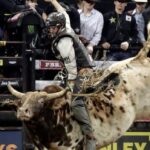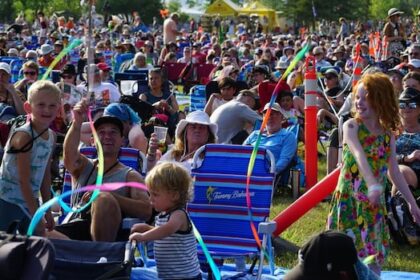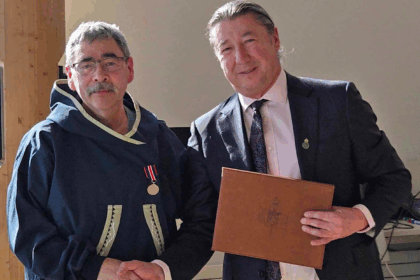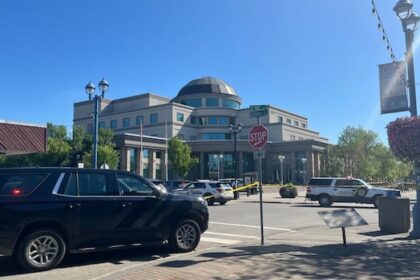B.C. fishermen are having mixed reactions to this year’s management of the bountiful sockeye salmon run in the Fraser River. Fisheries and Oceans Canada (DFO) is allowing recreational fishermen to take two sockeye per person, per day, from certain stretches of the Fraser, and commercial fisheries to catch about 20 per cent of the 10 million fish predicted to return.The allowance gives anglers rare access to the endangered salmon species for the first time in three years, and commercial fisheries greater yields than in recent years — but not all fishermen feel the quota is fair.Michael Griswold, who recently resigned from the Pacific Salmon Commission after 40 years because of what he says is DFO’s “mismanagement” of B.C.’s salmon industry, said commercial fishermen are being left behind.The Pacific Salmon Commission was established in 1985 by Canada and the United States to represent the interests of commercial and recreational fisheries.WATCH | Member of Pacific Salmon Commission resigns over sockeye salmon restrictions:Member of Pacific Salmon Commission resigns over sockeye salmon restrictionsFisheries and Oceans Canada (DFO) is facing criticism over restrictions placed on sockeye salmon fishing amid unexpectedly high Fraser River returns. One of those critics, Pacific Salmon Commission member Michael Griswold, has now resigned, saying he’s concerned DFO’s decision was made behind closed doors.Griswold says that when a sockeye salmon run is plentiful, expanded fishing opportunities are usually available for commercial and recreational fishing, but that is not the case this year.Fraser River sockeye salmon returns are separated into four management groups based on when they return to the river: Early Stuart, Early Summer, Summer and Late Run.Grisworld said this year’s total allowable catch of late-run sockeye was limited to 10 per cent of the run and largely allocated to First Nations for food, social and ceremonial purposes and to the U.S. to meet treaty obligations.”As the [late] run was starting to peak, we found that we had no extra fishing opportunities,” he said. Griswold said the commercial fishery was allowed to catch 200,000 sockeye overall on this year’s projected 10 million return to the Fraser River.Native commercial fishery also feels shortchangedFiona Claxton, executive director with the Native Fishing Association (NFA), said that generally, DFO tries to assess the size of a stock, and it never makes the total allowable catch any more than 20 per cent.”So if we have close to 10 million fish, they’ve been allowed to fish 200,000, so that’s not quite 20 per cent, so you can imagine the frustration of the fishermen,” Claxton told CBC’s The Early Edition. The NFA, founded in 1985 in response to Indigenous commercial fishermen falling behind in the industry due to a lack of funds, promotes and supports Indigenous commercial fisheries in B.C.Claxton said Indigenous commercial fishermen in B.C. are also frustrated by DFO’s sockeye salmon quotas. The NFA says that the largest commercial fishing licences in B.C. were allotted 829 sockeye per vessel, with smaller licenses allotted between 239 and 244 salmon.She said Indigenous commercial fishermen follow the same government regulations as non-Indigenous fishermen and issued an open letter to DFO asking them what the “real reason” was for this year’s low quotas in a year of “proven abundance.” LISTEN | Native Fishing Association says commercial fishers are frustrated by limited licences: The Early EditionNative Fishing Association says commercial fishers are frustrated by limited licencesExecutive Director Fiona Claxton shares why Indigenous commercial fishers are frustrated by limited quotas during a bumper year of Fraser sockeye returns.Claxton said Indigenous men and women have invested heavily in their commercial vessels, gear and licences, noting that this year they were hoping for a financial break. “You’re not just denying the commercial fleet as if it’s something separate from Indigenous interests, you’re actually denying the economic prosperity of Indigenous people that are part of the fleet,” she said. She says that maintaining commercial fishing boats and gear is expensive, and that for every dollar a fishing boat makes, around 50 per cent of it goes toward maintenance.DFO has given multiple reasons for the quotas, “almost as if they’re pulling reasons out of the air,” she said. “At first it was the water temperature, then they went to bycatch on chinook [salmon] … and here now they’re talking about the co-mingling of the late run.” Fisheries and Oceans Canada Adam Keizer, a DFO senior salmon adviser, said fisheries management is about the trade-off between harvest and conservation. “To inform these fishery trade-offs, managers need to evaluate management actions like quota limits against their management objectives, and when setting these objectives, [DFO’s] first priority is always conservation,” Keizer said. DFO told CBC News in an email that the closure of the recreational fishery on Sept. 1 is to protect the late-run sockeye salmon, as they are identified as a stock of conservation concern. The last time there was a recreational sockeye opening on the Fraser River was in September 2022.DFO said fisheries are managed so that species can spawn the next generation, and that mortality rates before species have had a chance to spawn have been as high as 90 per cent in recent years due to rising river temperatures, and more frequent drought and landslides in B.C.WATCH | DFO responds to commercial salmon fishery concerns over low sockeye quotas:DFO responds to commercial salmon fishery concerns over low sockeye quotasAdam Keize, a senior salmon advisor at Fishery and Oceans Canada, is defending DFO’s plan to keep commercial licences low amid a bumper Fraser sockeye return, saying it’s important to remain cautious when managing the impact of the sockeye salmon population. According to the Wild Salmon Center, at least 137 different species, from orcas to grizzly bears, depend on the marine-rich nutrients that wild salmon provide.It says that Pacific salmon are a $3-billion industry, supporting local economies and jobs around the Pacific Rim, noting that Indigenous people on the West Coast have a special relationship with salmon.According to the 2024 state of salmon report by the Pacific Salmon Foundation, Pacific salmon are in decline across B.C. and the Yukon. The website says that more than 70 per cent of salmon are below their long-term average of the 41 combinations of regions and species assessed. Keizer says that after conservation, First Nations fisheries fishing for food, ceremonial and social purposes “are provided priority access consistent with some constitutional rights.” After that, hopefully, there are openings for commercial and recreational fisheries, he said.
Commercial fishermen criticize sockeye salmon allocations in B.C. amid bountiful harvest











